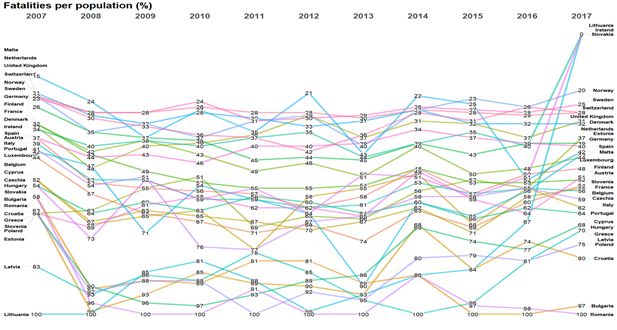
According to the annual accident report (2018) of the European Commission it is clear that during the decade 2007-2016 fatalities by mode of transport have dropped significantly inside the European Union (EU). However, there is always a place for further improvements. It is also clear that the changes in the socio-economic and demographic context of the EU countries have reported impacts on the fatalities by different modes of transport and overall, to their road safety levels. Therefore, in order to support the road safety strategies of the EU countries that have an under-performing system (in terms of road safety levels), it is essential to incorporate exposure and socio-economic factors and provide a comparative analysis of the performances of EU countries. This paper aims the support of road safety policymakers by investigating the road safety performance of 18 EU countries over the time period 2007-2016 (incorporating their exposure level and socio-economic context) and measuring the effect that these factors have on the countries’ road safety performance. For the evaluation of the countries’ road safety performance, a benchmarking analysis was implemented, namely Data Envelopment Analysis (DEA). The resulted technical efficiency scores of the countries in relation to their exposure and socio-economic context were used in a censored regression framework, i.e., Tobit regression analysis, for measuring the extent of relation with road safety performance. Overall, this paper aims to provide a ‘picture’ of the road safety level inside the EU region during the decade 2007-2016.
| ID | pc392 |
| Presentation | |
| Full Text | |
| Tags | accident analysis, information systems, international comparisons |






